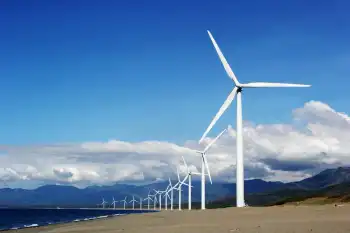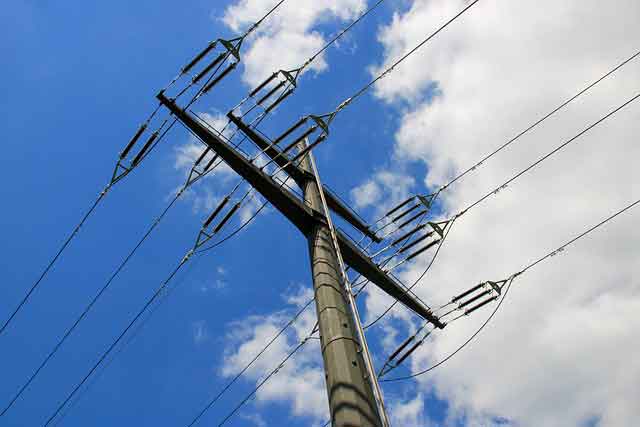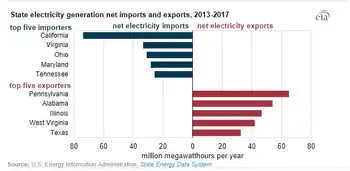Claims of structural problems at Cameco refuted
By Port Hope Evening Guide
NFPA 70b Training - Electrical Maintenance
Our customized live online or in‑person group training can be delivered to your staff at your location.

- Live Online
- 12 hours Instructor-led
- Group Training Available
Share prices were at $52.15 on July 12 and, as of August 7, had hit a low of $40.37 on the Toronto Stock Exchange.
Another possible contributing factor to the stock's decline is the discovery of uranium contamination and subsequent shutdown of the Port Hope plant. The uranium and potassium was found under the plant's cooling tank July 13 and announced to the press and the public July 20.
But a possible alternative explanation behind the UF6 plant's shutdown has been advanced by local citizen Pat McNamara, a self-described "watchdog" who ran unsuccessfully for mayor in last November's municipal elections.
Mr. McNamara wrote in an e-mail to this newspaper he was contacted by "a senior Cameco employee" last year and told "the building is in danger of imminent collapse."
Mr. McNamara stated the unidentified employee "could not" go public with his concerns, "as it would have meant the end of his career in the nuclear industry."
Mr. McNamara theorized the recent revelation about contamination and need for remediation was being used as a "ruse to hide structural problems."
But United Steelworkers Local 13173 President Chris Leavitt said Mr. McNamara's comments are a "pile of hogwash" and that he "would walk into that building without a worry at any time.
"This is way over the top," Mr. Leavitt said during a phone interview.
"If the building was in imminent danger of collapsing, we couldn't hide that. I feel just as safe today as ever."
In 2005, the Canadian Nuclear Safety Commission (CNSC) hired Cyril Hare consultants to do an Emergency Response Evaluation of the facility.
According to Mr. McNamara, the report stated: "The site includes approximately 44 structures or activity areas. The structures that have been constructed since the 1960s should have been designed and constructed in compliance with one of the editions of the National Building Code. None of the structures were constructed in compliance with the edition of the National Building Code that was in effect at the time of the design and construction of the buildings."
However, "there was no evidence of specific violations provided by the consultant to substantiate the statement," said Sunni Locatelli, director of the CNSC's communications programs division, after confirming the quote in the report regarding the National Building Code.
"The consultant's findings resulted in recommendations for improvements to fire safety systems. Cameco responded to these recommendations to the satisfaction of the CNSC."
The Evening Guide forwarded Mr. McNamara's allegations to Doug Prendergast, spokesperson for Cameco, and he replied via e-mail, saying, "Cameco is not aware of any problems with the structural integrity of building 50."
He has not yet responded to a question on whether Golder Associates, the geo-technical consulting firm hired to explore the level of soil contamination at the UF6 plant, is also looking at the building's structural integrity.
Nor did he confirm whether equipment had to be moved from the upper floors, as suggested by Mr. McNamara.
"With regard to the recent contamination of the Port Hope Cameco site, CNSC staff visited the site on July 19 and July 26, met with Cameco staff and inspected the affected area of the plant," said Aurele Gervais, spokesperson for the CNSC. "Cameco is providing updates to CNSC staff daily on progress in investigating this issue. There is a weekly conference call between Cameco and CNSC staff."
Mr. Gervais said CNSC staff would do another inspection and "will continue with regular inspections until the (contamination) issue is fully understood."
Mr. Gervais added ongoing groundwater monitoring around the UF6 plant indicates the current situation does not pose a risk to public health or the environment; he said CNSC staff continues to monitor the situation to ensure it remains contained and is satisfied with the actions taken by Cameco to further investigate the matter.
"CNSC staff will present an update on this issue to the commission in September," said Mr. Gervais. "With regard to structural integrity, the UF6 facility was built to the appropriate codes in the early 1980s. The licensee is responsible to ensure that the facility continues to be maintained in a safe state and CNSC staff verifies this through our compliance program. The topic of adherence to the National Building Code of Canada and the National Fire Code of Canada was discussed extensively at the re-licensing hearing in the fall of 2006."
According to the approved licence application from March 1, 2007 to February 29, 2012, the CNSC is satisfied Cameco meets all of the requirements to carry on operations in a safe manner.
Allegations that "insider trading" was responsible for the seven-day delay from the time the uranium leak was found to its public reporting have been deemed false, according to Gord Struthers of Cameco's head office in Saskatoon, Sask. Although he admitted Cameco employees do have stock options as part of their benefits program, there are certain times when employees are in a "blackout" situation and not allowed to trade their shares.
"At the time of this development, there was a planned blackout because of the quarterly report about to be released," said Mr. Struthers. "There is no possibility that the executive or the employees could have traded shares."
At this time, Cameco has yet to determine the impacts the minimum two-month plant closure will have on its earnings forecasts as presented in July.
"Our forecasted profits are still being assessed," said Mr. Prendergast.











